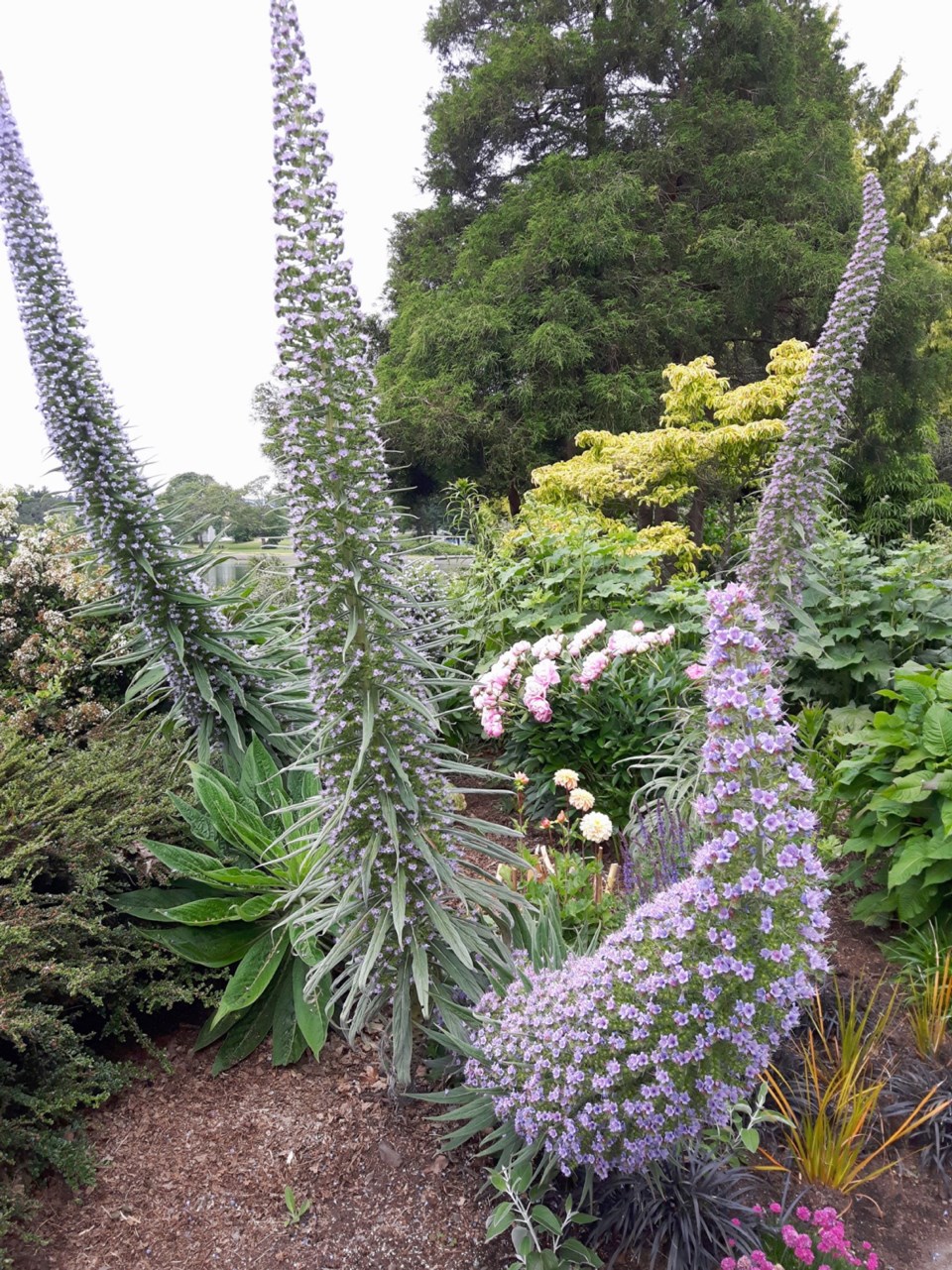Dear Helen: Can you tell me the name of a very tall plant I’ve seen around Victoria? It’s over two metres tall and covered with tiny pink flowers.
J.F.
I believe the plants in your photo are Eremurus robustus (Giant Eremurus, Giant Desert Candle). The common name for Eremurus is foxtail lily.
E. robustus is variable in flower colour and height. The flower spikes can grow up to three metres high, with hundreds of tiny flowers, usually in variations on pink. The plants grow very fast, up to 15 centimetres a day in spring.
The roots are like giant spiders, whose long arms spread out to support the hefty flower stalks. The plants grow a new root each year and eventually form a multi-stemmed clump. They can be lifted and pulled apart in the fall.
Foxtail lilies thrive in sun with a fertile, well-drained soil and little water in summer, after the flowering period. In home gardens, it is best to remove the flower stems before they set seed.
Dear Helen: We will soon be moving to a property with heavy, clay soil. What are the most efficient ways to move its texture toward a friable loam? Would burying fruit and vegetable waste from the kitchen help?
B.L.
Clay soils have very tiny particles that clump together like glue. The process of creating spaces between the particles to allow for the development of vigorous root systems on our plants can be a long one. It’s a matter of incorporating materials that will bite into the soil and create those spaces.
My large Vernon garden, grown in a clay-based soil, was the most productive I’ve ever had. Once it is even modestly workable for planting, a clay-based soil is excellent at holding on to nutrients as well as moisture.
I mulched around plants and between rows with a mixture of grass mowings and old, composted sawdust, and dug, or lightly cultivated, these materials in at the end of the season. Chopped straw and compost can be used in a similar manner.
It might seem a contradiction, but organic materials such as compost, manures and straw that bite into and break up clay also help light, sandy soils retain moisture. Digging fruit and vegetable trimmings from the kitchen into deep holes in the garden works both ways, too.
Consider covering the soil in the fall with leaves, chopped straw and/or compost and digging the materials in once the soil has dried in the spring. Avoid walking on or digging clay soil when it is wet. This will further compact the soil.
Keep in mind that planting areas that are raised will drain of excess moisture faster in the spring than the surrounding lower surface. Some gardeners I’ve heard from have found it helpful to use fine, sharp-edged (jagged) gravel to help break up clay. Avoid using sand; it will create cement.
Dear Helen: Is it true that citrus trees can be grown in the Victoria area? I haven’t seen plants in the nurseries I’ve visited.
L.L.
Citrus plants of various kinds are being more commonly grown in the area as people learn about the different types of plants and which ones are likely to be successful here.
The best source for both plants and growing information is at Fruit Trees & More in North Saanich (fruittreesandmore.com).
The latest bulletin I received from them included a list of 26 citrus varieties available at their nursery — lemon, lime, orange, tangelo and more. Check the website for opening times.
Garden events
Government House nursery. The plant nursery at Government House, 1401 Rockland Ave. in Victoria, is now open for public sales from 9 a.m. to noon on Tuesdays and Thursdays through to Aug. 30. The nursery is opposite the tea room.
Dahlia meeting. The Victoria Dahlia Society will meet on Thursday at 7 p.m. at the Prospect Lake Community Hall Garden, 5358 Sparton Rd. The evening’s program will be a demonstration of disbudding, topping and overall care of dahlias. Visitors are welcome. Bring a lawn chair.
Summer pruning. The Horticulture Centre of the Pacific, 505 Quayle Rd. in Saanich, is offering a Summer Fruit Tree Pruning workshop on Sat. July 14, 9 a.m. to 12 p.m. Learn how this approach to pruning can reduce the burden of dormant-season pruning and provide you with higher quality fruit. Bring secateurs. Cost to HCP members $45, others $55. To register call 250-479-6162.



